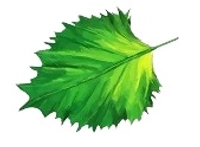
Joginder Nursery
Product details
Pudina, commonly known as Mint, is not just a refreshing herb used in culinary delights but also a powerhouse of medicinal benefits. This versatile plant is revered for its ability to address a wide range of health issues, making it a must-have addition to your home garden. Let's explore the medicinal uses of Pudina and learn how to care for this beneficial plant:
Medicinal Uses of Pudina:
Digestive Health: Pudina is well-known for its ability to soothe digestive discomfort. It aids in digestion, relieves gas, and alleviates symptoms of indigestion and acidity. A cup of warm mint tea after meals can work wonders for your digestive system.
Respiratory Support: The menthol present in mint leaves acts as a natural decongestant, making it effective in providing relief from respiratory issues such as asthma, bronchitis, and nasal congestion. Inhaling steam infused with mint leaves can help clear nasal passages and ease breathing.
Pain Relief: Mint possesses analgesic properties that can help alleviate various types of pain, including headaches, menstrual cramps, and muscle aches. Applying mint oil or a poultice made from crushed mint leaves to the affected area can provide quick relief.
Plant Care Instructions:
Light and Temperature: Mint plants thrive in partial to full sunlight. Place your mint plant in a location where it receives at least 4-6 hours of sunlight daily. Ensure the temperature remains moderate, ideally between 65°F to 75°F (18°C to 24°C).
Watering: Keep the soil consistently moist but not waterlogged. Water your mint plant regularly, especially during hot and dry weather. Allow the top inch of soil to dry out between waterings to prevent root rot.
Soil and Fertilization: Mint plants prefer well-draining soil with a slightly acidic pH level. Use a mixture of garden soil, sand, and organic compost for optimal growth. Fertilize your mint plant with a balanced liquid fertilizer diluted to half strength every 4-6 weeks during the growing season.
Pruning and Maintenance: Regular pruning is essential to encourage bushy growth and prevent the plant from becoming leggy. Pinch off the tips of the stems regularly to promote branching and harvest the leaves frequently to stimulate new growth.
Pest Control: Mint plants are relatively pest-resistant, but they may occasionally attract pests like aphids, spider mites, and whiteflies. Inspect your plant regularly and treat any infestations promptly with insecticidal soap or neem oil.
Propagation: Mint plants can be easily propagated from stem cuttings. Simply cut a 4-6 inch stem from a healthy mint plant, remove the lower leaves, and place the cutting in a glass of water. Once roots develop, transplant the cutting into a pot filled with well-draining soil.
Please Note: Images are for reference purposes only. Actual product may vary in shape or appearance based on climate, age, height, etc. The product is replaceable but not returnable.
Similar products